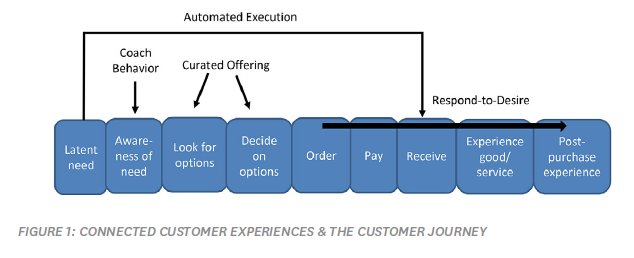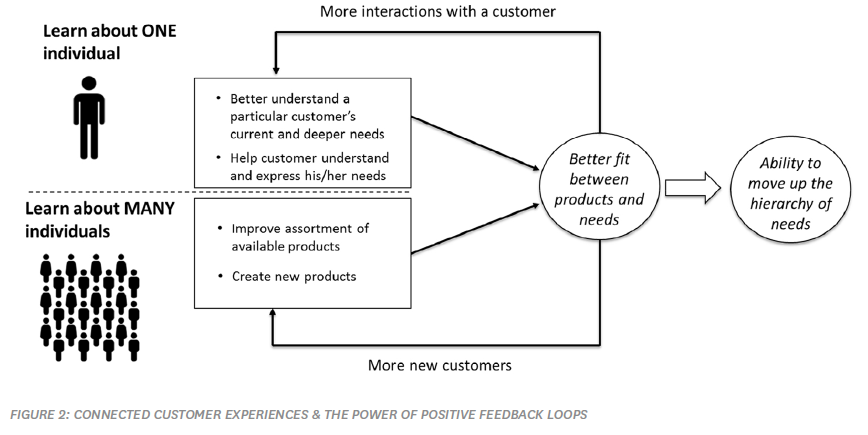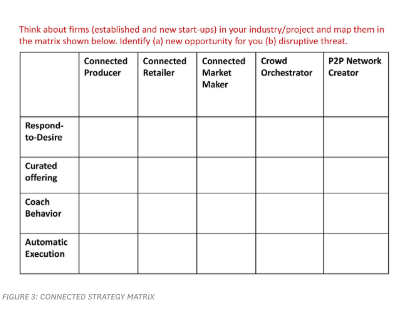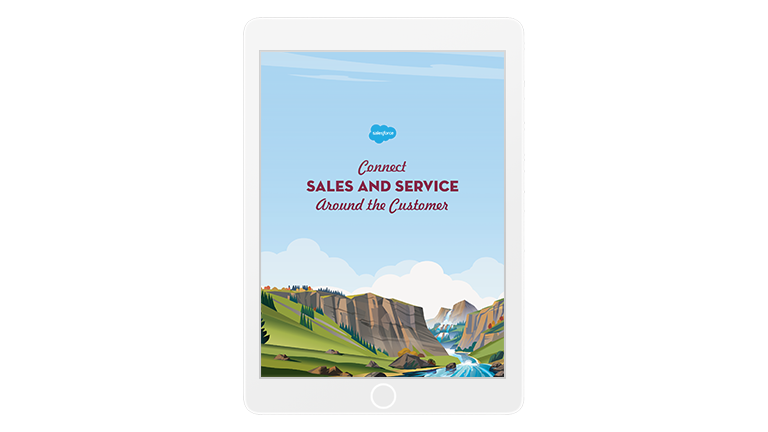Webinar: How to Develop and Compete on Connected Strategies


Harvard Business Review Webinar, sponsored by Salesforce
How to Develop and Compete on Connected Strategies
Presenters:
Nicolaj Siggelkow, Professor, The Warton School, University of Pennsylvania, Co-author of Connected Strategy: Building Continuous Customer Relationships for Competitive Advantage
Christian Terwiesch, Professor, The Wharton School, University of Pennsylvania, Co-author of Connected Strategy: Building Continuous Customer Relationships for Competitive Advantage
Presenters:
Christian Terwiesch, Professor, The Wharton School, University of Pennsylvania, Co-author of Connected Strategy: Building Continuous Customer Relationships for Competitive Advantage
Moderator:
Overview
Context
Key Takeaways
Connected strategies replace episodic interactions between firms and customers with magical user experiences.
The power of connectivity comes from delivering magical user experiences along with amazing productivity and reduced costs. Tesla cars, for example, are digitally connected to the Tesla service team. Routine maintenance and problems are addressed proactively, without the driver ever making a phone call.
Another example is Disney’s “Magic Bands.” These wristbands track visitors throughout Disney parks and enable unique customer experiences. Disney discovered the tracking technologies in the hospital setting and launched Magic Bands on Disney cruise ships to keep track of children participating in onboard camps.
Disney then expanded Magic Bands to their theme parks. The first application was “meet and greet.” Disney characters can access information about a child’s name from his or her Magic Band and greet a child by name. Magic Bands enable Disney visitors to order meals and have them delivered to wherever they are, obtain customized recommendations for activities, have personalized experiences when playing video games, and receive custom photo memory books created from cameras in the park.
Connected strategies turn what used to be episodic interactions between firms and customers into an environment of always being connected. Every company, not just Disney, can provide these Experiences.
The connected customer relationship and connected delivery model can disrupt Markets.
The connected customer experience drives up the value that customers see, while the connected delivery model reduces the cost of serving customers. Companies that focus on both can disrupt industries. Meal kit services like Blue Apron and Hello Fresh are good examples.
These services deliver recipes and all of the ingredients needed for meals. Part of the value is the quality of the produce, but the services also eliminate other pain points, which increases customers’ willingness to pay. At the same time, meal kit companies have streamlined the supply chain and cut out middlemen, reducing costs.
Through deep connections with customers, companies can direct them to solutions with lower costs. In the case of meal kit services, local farmers can run their operations more efficiently because they know who will buy their crops. If firms increase the gap between willingness to pay and cost, they can create new competitive advantage in the marketplace.
Through connected customer relationships, companies recognize customer needs, request solutions, and respond.
A connected customer relationship has four basic elements:
- Recognizing the customer need
- Translating the information to a request for a particular solution
- Responding to the need
- Repeating the interaction, which enables the firm to improve at 1, 2, and 3
Not all connected customer relationships are the same, however. There are four different categories of connected customer experiences which align to different stages in the customer journey:
- Respond to desire. The firm tries to respond to an explicit customer request very effectively. This may be done rapidly or with a broad offering. Companies that deliver this type of experience include Amazon, Lyft, and Airbnb. Respond-to-desire experiences start the moment a customer knows what they want to order. The firm makes the last part of the customer journey as smooth as possible.
- Curated offering. As the firm learns more about the customer, it responds to and anticipates the customer’s needs by providing customized products and services. An example is Netflix’s suggestions. Curated offerings occur earlier in the customer journey. Companies help customers think about all possible options that could fulfill their needs and identify the best options.
- Coach behavior. The firm tries to nudge the behavior of customers to help them overcome inertia and decision biases. For instance, customers may want to take their medication, but they are forgetful; or they want to lose weight, but have trouble sticking to a diet. Firms may employ behavioral interventions in the form of personal feedback and social comparisons. Coaching behavior occurs even earlier in the customer journey.
- Automated execution. The firm automatically deduces and anticipates the customer’s needs, then fulfills them. For example, the firm might provide a behavioral medical intervention, re-order milk or water, deliver glucose testing supplies, or rebalance the customer’s financial portfolio. With automated execution, companies are aware of problems or needs well before the customer and fulfill the needs with the right product or service. The goal isn’t to transform every transaction into an automated execution connected experience. In fact, some customers enjoy parts of the purchase process and wouldn’t want every transaction to be executed automatically for them.

Repeated customer interactions enable companies to build sustainable competitive advantage.
Repeated interactions play a central role in connected customer relationships. These are how companies learn about customers. Initial customer interactions are often just the tip of the iceberg in terms of understanding and addressing customer needs. Beyond those initial transactions, customers may have a more complex hierarchy of needs.
Companies can’t jump immediately, however, to becoming a trusted advisor. Slow, positive feedback loops between companies and customers enable firms to slowly move up the customer’s hierarchy of needs. The goal is to create a better fit between customer needs and the company’s products and services. As that fit improves, the company draws in new customers. This learning is hard for competitors to replicate.

“The promise of connected strategies is that through multiple customer interactions, we learn more about them and slowly move up the hierarchy of needs. That’s where sustainable advantage comes from.”
Connected delivery models range from connected producers and retailers to peer-to-peer Networks.
Five different types of connected delivery models are:
- Connected producers. These often provide product-as-a-service offerings. In the mobility space,for example, BMW and Daimler just merged their ride sharing activities into a company called DriveNow. BMW and Daimler produce the cars, organize the service, and run the app. Disney is also an example of a connected producer.
- Connected retailers. Like traditional brick and mortar retailers, these companies buy on one side and sell on the other. Examples include Blue Apron meal kits, ZipCar, and Netflix.
- Connected market makers. One example is TrueCar which simplifies car buying by matching customers with car retailers. TrueCar never gets in the way of transactions. It simply brokers two sides of the market through its platform. This model reduces risk because platform companies focus solely on connecting parties.
- Crowd orchestrators. Uber and Lyft are unique because they don’t just match passengers to existing drivers like cabs. They have created a new pool of suppliers by orchestrating individual drivers and creating a virtual firm. From the customer’s perspective, it feels like interacting with one big firm. Another example of a crowd orchestrator is Airbnb.
- Peer-to-peer (P2P) networks. Transaction P2P network creators charge for using the network,either as a transaction fee or a membership fee. Examples include Peloton for truck platooning or Blabla Cars for ridesharing. Access P2P network creators don’t charge to join the network, but they sell access to the network participants and their data. Advertisers are the most frequent buyers. Examples are LinkedIn and Facebook. Complementor P2P network creators establish networks, usually with free membership, as a complement to other products or services they sell. For instance, Nike sponsors online running clubs.
The connected strategy matrix helps firms chart a course for delivering connected customer experiences.
The connected strategy matrix (Figure 3) is a helpful tool for mapping a company’s existing activities, as well as the activities of competitors and new entrants. It can also be used to support an innovation exercise. The matrix offers a structured approach for generating new business ideas.

“If you think about the idea of disruption, it usually doesn't come from a company that uses the same type of connection architecture as you do. Disruption usually comes from somebody who is playing a different game.”
Nicolaj Siggelkow
Christian Terwiesch
Christian Terwiesch is the Andrew M. Heller Professor at the Wharton School of the University of Pennsylvania. He is a Professor in Wharton’s Operations, Information and Decisions department, co-director of Penn’s Mack Institute for Innovation Management, and also holds a faculty appointment In Penn’s Perelman School of Medicine. His research on Operations Management and on Innovation Management appears in many of the leading academic journals ranging from Management Science to The New England Journal of Medicine. He is an award winning teacher with extensive experience in MBA teaching and executive education.
Professor Terwiesch is the co-author of Matching Supply with Demand, a widely used text-book in Operations Management that is now in its third edition. Based on this book, Professor Terwiesch has launched the first Massive Open Online Course (MOOC) in business on Coursera. By now, well over 250,000 students enrolled in the course.
His latest book, Innovation Tournaments, was published by Harvard Business School Press. The novel, process-based approach to innovation outlined in the book was featured by BusinessWeek, the Financial Times, and the Sloan Management Review and has lead to innovation tournaments in organizations around the world.
Professor Terwiesch has researched with and consulted for various organizations. From small start-ups to Fortune 500 companies, he has helped companies become more innovative, often by implementing innovation tournament events and by helping to restructure their innovation portfolio.
Julie Devoll
Want to read the full report?
Questions? We’ll put you on the right path.





